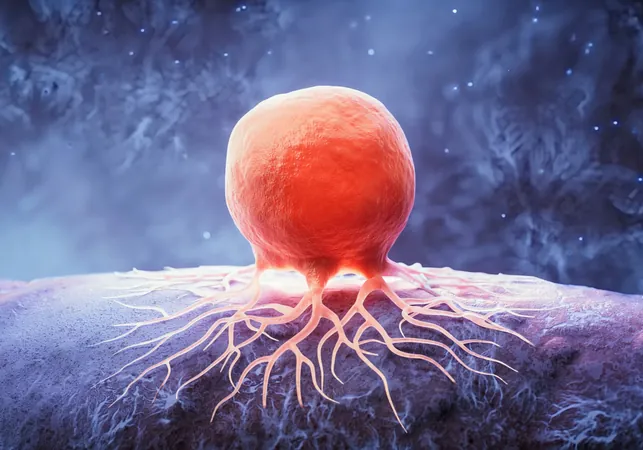
Breakthrough in HIV Research: New Protein Interactions May Lead to Revolutionary Treatments!
2024-12-23
Author: Arjun
The human immunodeficiency virus (HIV) has long been a global health crisis since it emerged into public awareness in the early 1980s, marking the beginning of a battle against a ruthless virus. Over 42 million lives have been claimed by HIV/AIDS, but advancements in treatment have allowed many to live fulfilling lives despite the ongoing challenge of this chronic condition. However, the quest for a definitive cure continues.
Understanding HIV and the Role of APOBEC3
Dr. Linda Chelico, who leads the Department of Microbiology, Immunology, and Biochemistry at the University of Saskatchewan (USask), focuses on understanding the immune response to HIV. Her team investigates the role of a protein family known as APOBEC3, which plays a crucial part in mutating the HIV virus. Nevertheless, HIV has developed a defensive mechanism, using its own Vif protein to neutralize the effectiveness of APOBEC3, creating a complex battle within our cells.
Groundbreaking Findings
In a groundbreaking study recently published in the Journal of Virology, Chelico and her colleagues, including post-doctoral fellow Dr. Amit Gaba, uncovered interactions between APOBEC3 and Vif proteins previously unknown to researchers. This discovery provides a more detailed map for designing drugs aimed at manipulating these interactions.
"We initially made the mistake of only examining one version of Vif alongside a single APOBEC3 protein. This doesn't truly reflect what occurs in real-life infections," Chelico explained. By analyzing several isolated HIV strains with various Vif proteins, they found significant differences. Their study also revealed that APOBEC3 proteins do not act alone; instead, they work collaboratively during infections, forming a new structure that enhances their antiviral activity.
The Potential for a Natural Cure
The potential for these APOBEC proteins to act as a natural defense mechanism against HIV presents an exciting opportunity. "If we can inhibit the interaction between APOBEC3 and Vif effectively, we could harness a natural cure against the virus," Chelico noted.
This latest development instills hope for novel treatments that would not merely suppress HIV but could potentially lead to a lasting solution. Given that HIV continues to pose a severe public health concern worldwide, researchers are optimistic that their work will empower the body’s immune system, preventing HIV infections from establishing themselves.
Looking Ahead
As science progresses, the possibility of a world where HIV is no longer a threat grows closer. Stay tuned as this groundbreaking research develops and could change the narrative in the fight against HIV/AIDS forever!

 Brasil (PT)
Brasil (PT)
 Canada (EN)
Canada (EN)
 Chile (ES)
Chile (ES)
 España (ES)
España (ES)
 France (FR)
France (FR)
 Hong Kong (EN)
Hong Kong (EN)
 Italia (IT)
Italia (IT)
 日本 (JA)
日本 (JA)
 Magyarország (HU)
Magyarország (HU)
 Norge (NO)
Norge (NO)
 Polska (PL)
Polska (PL)
 Schweiz (DE)
Schweiz (DE)
 Singapore (EN)
Singapore (EN)
 Sverige (SV)
Sverige (SV)
 Suomi (FI)
Suomi (FI)
 Türkiye (TR)
Türkiye (TR)